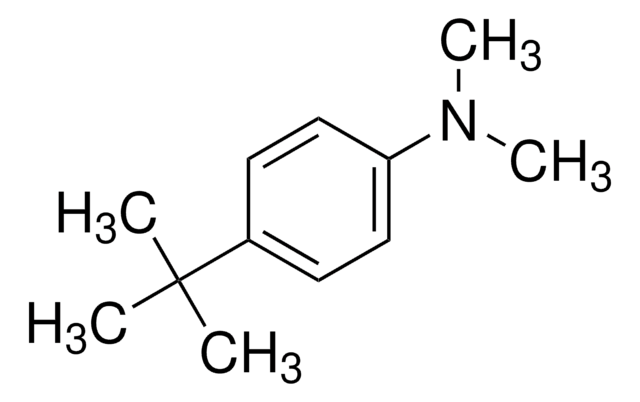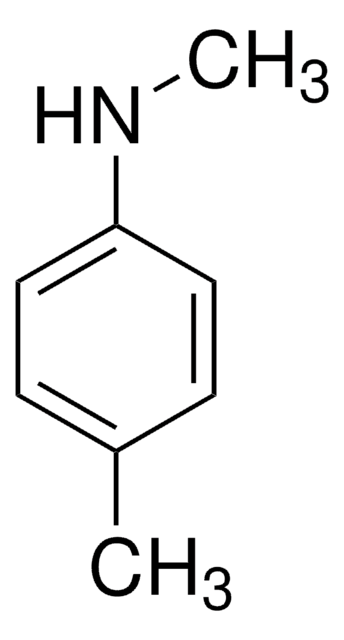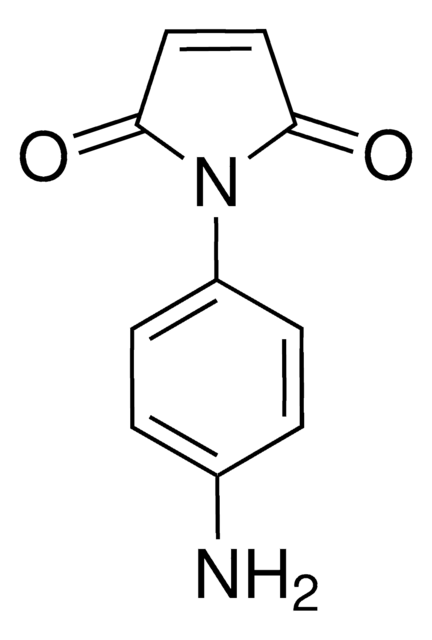D189006
4,N,N-Trimethylaniline
99%
Sinonimo/i:
4-Dimethylaminotoluene, N,N-Dimethyl-p-toluidine
About This Item
Prodotti consigliati
Densità del vapore
>1 (vs air)
Livello qualitativo
Saggio
99%
Stato
liquid
Limite di esplosione
7 %
Indice di rifrazione
n20/D 1.546 (lit.)
P. ebollizione
211 °C (lit.)
90-92 °C/10 mmHg (lit.)
Densità
0.937 g/mL at 25 °C (lit.)
Stringa SMILE
CN(C)c1ccc(C)cc1
InChI
1S/C9H13N/c1-8-4-6-9(7-5-8)10(2)3/h4-7H,1-3H3
GYVGXEWAOAAJEU-UHFFFAOYSA-N
Cerchi prodotti simili? Visita Guida al confronto tra prodotti
Categorie correlate
Applicazioni
Avvertenze
Danger
Indicazioni di pericolo
Consigli di prudenza
Classi di pericolo
Acute Tox. 2 Inhalation - Acute Tox. 3 Dermal - Acute Tox. 3 Oral - Aquatic Chronic 3 - Carc. 1B - Repr. 2 - Skin Sens. 1 - STOT RE 2 Oral
Organi bersaglio
Reproductive organs
Codice della classe di stoccaggio
6.1A - Combustible acute toxic Cat. 1 and 2 / very toxic hazardous materials
Classe di pericolosità dell'acqua (WGK)
WGK 3
Punto d’infiammabilità (°F)
168.8 °F - closed cup
Punto d’infiammabilità (°C)
76 °C - closed cup
Dispositivi di protezione individuale
Eyeshields, Faceshields, Gloves, type ABEK (EN14387) respirator filter
Scegli una delle versioni più recenti:
Possiedi già questo prodotto?
I documenti relativi ai prodotti acquistati recentemente sono disponibili nell’Archivio dei documenti.
I clienti hanno visto anche
Global Trade Item Number
| SKU | GTIN |
|---|---|
| D189006-100ML | 4061833561027 |
| D189006-1L | 4061833561034 |
| D189006-500ML | 4061836830694 |
| D189006-5ML |
Il team dei nostri ricercatori vanta grande esperienza in tutte le aree della ricerca quali Life Science, scienza dei materiali, sintesi chimica, cromatografia, discipline analitiche, ecc..
Contatta l'Assistenza Tecnica.













